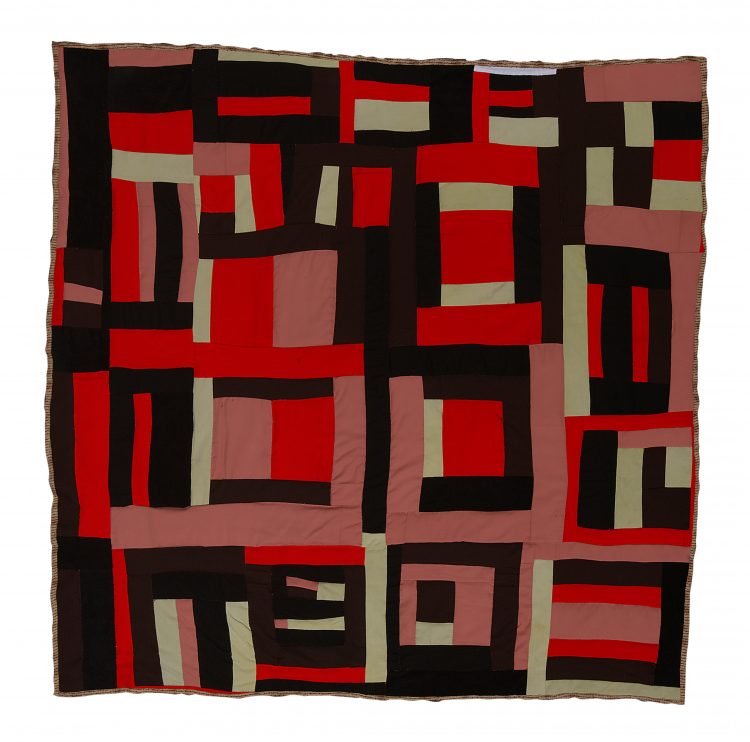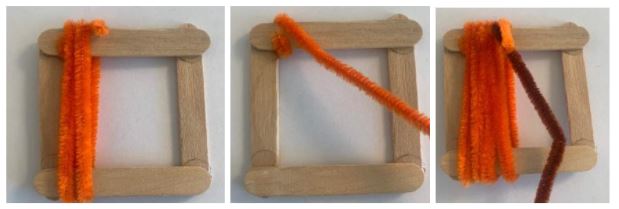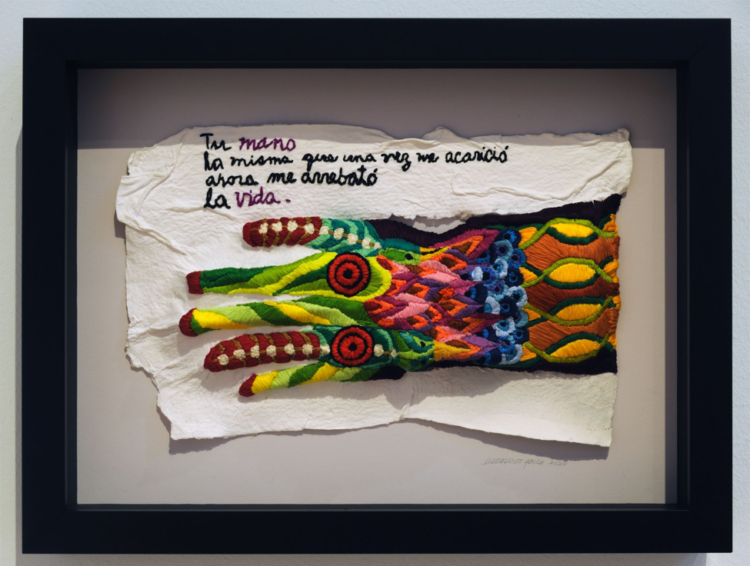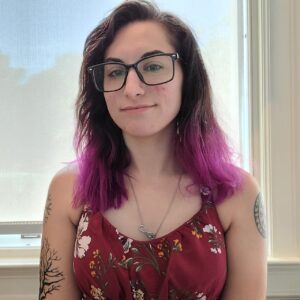To celebrate the holidays, create a Gee’s Bend-inspired wall hanging or ornament at home with family and friends. This activity was developed by Community Engagement intern Gabrielle Walker.
For this activity you will need:
• Glue
• Colorful chenille stems or fuzzy wire
• Wooden craft sticks
• Optional: beads, charms, yarn, or other items for embellishment

Mary Lee Bendolph, Housetop Variation, 1998, Cotton corduroy, twill, assorted polyesters, 72 x 76 in, The Phillips Collection, Partial gift, partial purchase from Souls Grown Deep Foundation and the Dreier Fund for Acquisitions, 2019
CLOSE LOOKING
Look carefully at this quilt. Focus on the pattern.
• What shapes do you notice?
• What colors did the artist use?
• What do the colors suggest to you?
GEE’S BEND QUILTS
As you snuggle up for the holidays with your family, remember the long history behind quilting traditions. Quilts are handmade blankets often intended for loved ones. This quilt was made by Mary Lee Bendolph, a quilter from Gee’s Bend, Alabama. Women from Gee’s Bend overcame many hardships—poverty, racism, geographic isolation—and, out of necessity, used old clothes and other recycled cloth to create quilts that are now famous as works of art throughout the world. “Old clothes have a spirit in them,” Bendolph has said. “They also have love. When I make a quilt, that’s what I want it to have, too, the love and the spirit of the clothes and the people who wore it.”
Mary Lee Bendolph said: “Quilts is in everything. Sometimes I see a big truck passing by. I look at the truck and say, I could make a quilt look like that…I see the barn, and I get an idea to make a quilt. I can walk outside and look around in the yard and see ideas all round the front and back of my house….As soon as I leave the house I get ideas.”
CREATE YOUR OWN QUILT
For this art activity, we will make a wall hanging or ornament inspired by Gee’s Bend quilts. Quilts represent love, warmth, and family to many people who make them. What better way to celebrate the holiday season than gifting someone art inspired by a quilt!
1. Gather your supplies and lay them out.
2. Create a square frame by gluing the ends of the craft sticks together. You can use glue dots, hot glue, or Elmer’s glue.

Make your frame
3. On a blank sheet of paper, sketch some design ideas.
4. To start your quilt square, wrap the end of a fuzzy wire tightly around one part of the frame. Pinch the wire to itself so it won’t unravel. Then continue to wrap that wire around the whole frame. Add layers and embellishments until you are pleased with your design. Will you use many colors or just one? Be creative!

Start your design
5. You can add lines or shapes by attaching new fuzzy wire to the base layer. Experiment!

Experiment with colors and patterns
6. You can also add your own materials, like fabric, beads, or charms. Here are some samples made by Phillips educators:

Samples from Phillips educators
7. If you wish, attach a loop made with fuzzy wire to complete your wall hanging or tree ornament.
LEARN MORE
Looking for more inspiration? Discover more quilt patterns and learn about the quilters from Gee’s Bend from the Souls Grown Deep Foundation.



